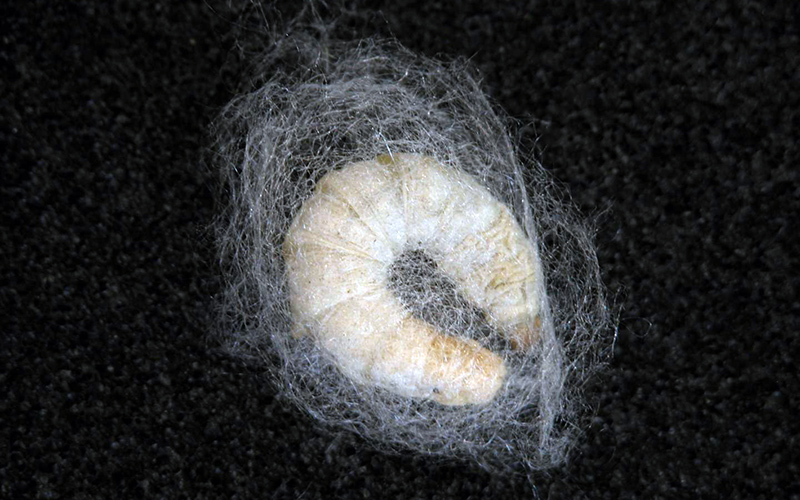
Silk is a natural protein fiber, some forms of which can be woven into textiles. The protein fiber of silk is composed mainly of fibroin and is produced by certain insect larvae to form cocoons. The best-known silk is obtained from the cocoons of the larvae of the mulberry silkworm Bombyx mori reared in captivity (sericulture). The shimmering appearance of silk is due to the triangular prism-like structure of the silk fibre, which allows silk cloth to refract incoming light at different angles, thus producing different colors. Silk is produced by several insects, but generally only the silk of moth caterpillars has been used for textile manufacturing.
What are Micrococoons?
Micrococoons are micron-scale capsules comprised of a solid and tough shell of silk nano-fibrils that surround and protect a center of liquid cargo. Micro caccoons are more than a thousand times smaller than those created by silkworms.
How did Micrococoons get created?
Announced July 17, 2017, Microscopic versions of the cocoons spun by silkworms have been manufactured by a team of researchers. The tiny capsules, which are invisible to the naked eye, can protect sensitive molecular materials, and could prove a significant technology in areas including food science, biotechnology and medicine.
The capsules were made at the University of Cambridge using a specially-developed microengineering process. The process mimics on the microscale the way in which Bombyx mori silkworms spin the cocoons from which natural silk is harvested. The resulting micron-scale capsules comprise a solid and tough shell of silk nano-fibrils that surround and protect a center of liquid cargo, and are more than a thousand times smaller than those created by silkworms.
Writing in the journal Nature Communications, the team suggest that these micrococoons are a potential solution to a common technological problem: How to protect sensitive molecules that have potential health or nutritional benefits, but can easily degrade and lose these favourable qualities during storage or processing.
The study argues that sealing such molecules in a protective layer of silk could be the answer, and that silk micrococoons that are far too small to see (or taste) could be used to house tiny particles of beneficial molecular cargo in various products, such as cosmetics and food.
The same technology could also be used in pharmaceuticals to treat a wide range of severe and debilitating illnesses. In the study, the researchers successfully showed that silk micrococoons can increase the stability and lifetime of an antibody that acts on a protein implicated in neurodegenerative diseases.
The work was carried out by an international team of academics from the Universities of Cambridge, Oxford and Sheffield in the UK; the Swiss Federal Institute of Technology in Zurich, Switzerland; and the Weizmann Institute of Science in Israel. The study was led by Professor Tuomas Knowles, a Fellow of St John's College at the University of Cambridge and co-director of the Centre for Protein Misfolding Diseases.
The researchers created a tiny, artificial spinning duct, which copies the natural spinning process to cause the unspun silk to form into a solid. They then worked out how to control the geometry of this self-assembly in order to create microscopic shells.
Making conventional synthetic capsules can be challenging to achieve in an environmentally friendly manner and from biodegradable and biocompatible materials. Silk is not only easier to produce; it is also biodegradable and requires less energy to manufacture.
Silk micrococoons could also expand the range and shelf-life of proteins and molecules available for pharmaceutical use. Because the technology can preserve antibodies, which would otherwise degrade, in cocoons with walls that can be designed to dissolve over time, it could enable the development of new treatments against cancer, or neurodegenerative conditions such as Alzheimer's and Parkinson's Diseases.
To explore the viability of silk microcapsules in this regard, the researchers successfully tested the micrococoons with an antibody that has been developed to act on alpha-synuclein, the protein that is thought to malfunction at the start of the molecular process leading to Parkinson's Disease. This study was carried out with the support of the Cambridge Centre for Misfolding Diseases, whose research programme is focused on the search for ways of preventing and treating neurodegenerative conditions such as Alzheimer's and Parkinson's diseases.
The study, Silk microcooons for protein stabilisation and molecular encapsulation, is published in Nature Communications.